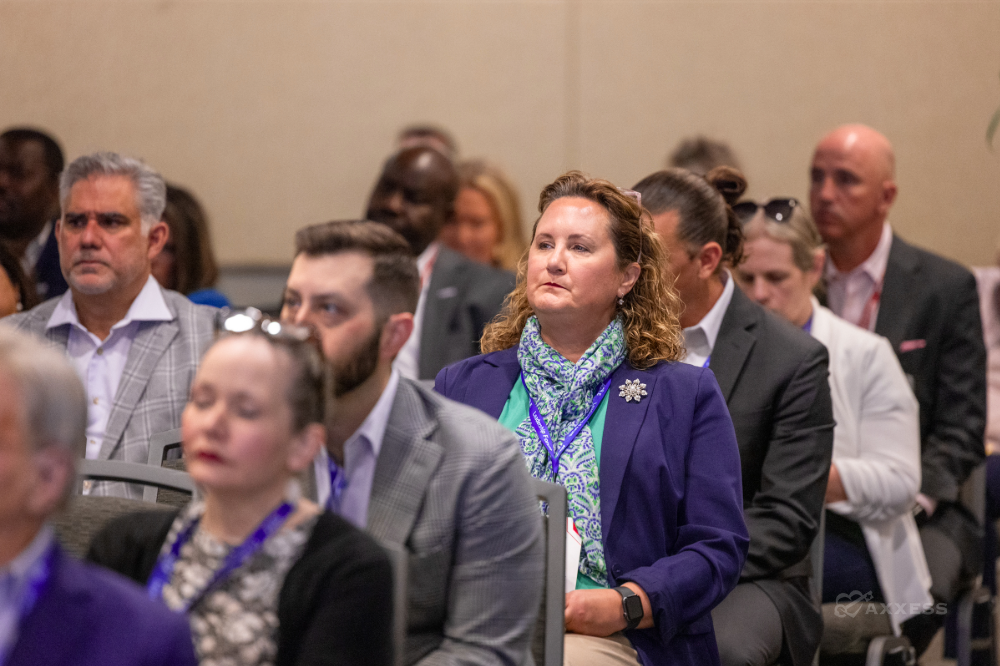
Compliance shortcomings remains a critical topic and a significant challenge for leaders in the care at home industry. With heightened oversight and regulatory scrutiny, organizations must prioritize compliance and quality more than ever to ensure success.
In an education session at the 2024 Axxess, Growth, Innovation and Leadership Experience (AGILE), Rob Simione, Principal at SimiTree; Valerie Cornett, Chief of Strategy and Innovation at MAC Legacy; Molly McDonald, Vice President of Quality and Compliance at Frontpoint Health; Cindy Frazier, Chief Compliance Officer at Allegiance Healthcare; and Joe Osentoski, Senior Consultant at Gateway Home Health Coding and Consulting, shared ways leaders can increase their knowledge around compliance and avoid financial losses.
Compliance Programs
Cornett opened the session detailing the importance of implementing a compliance program, noting they are key to avoiding monetary penalties associated with risk areas like HIPPA regulations, billing compliance and false claims.
“Compliance programs help you identify the gaps to prevent losses,” Cornett said. “It reviews the systems in your organization to identify breakdowns, and ensure overall continuous improvement.”
Cornett added that the compliance program needs to be more than a binder on a shelf, noting that it should serve as a living document that can adapt and change as regulations change and evolve.
Cornett suggested that organizations look at the seven elements provided by the Office of the Inspector General (OIG) when building compliance programs or adjusting existing programs.
“The OIG is pretty clear in in their guidance that no matter what size organization you have, if you can take the components of this and implement it into your compliance plan, you’ll be successful,” Cornett said.
McDonald added organizations should ensure compliance is implemented within the organization. She noted that for compliance to be successfully operational and patient-centered, it shouldn’t be siloed off to a separate department or individual. Everyone in the organization should be able to speak to compliance updates and operations.
“If you have a leadership meeting, make sure there’s always a compliance portion of that,” McDonald said. “And the compliance officer, or even better yet, someone who’s not the compliance officer, comes and talks about compliance and how you operationalize, that is a huge part of keeping it patient-centered.”
Productivity Shift
Simione outlined the need for everyone in the organization to work together to improve quality, highlighting that while organizations should continue prioritizing the number of visits a clinician completes to reach the bottom line, organizations should also focus on incentivizing clinicians based on their quality scores. He added that organizations should pick two or three metrics to improve for the year and have their clinicians work together to achieve that goal.
Frazier echoed Simione’s sentiments, noting that involving team members in the process not only boosts motivation but also reinforces the importance of compliance for the ultimate benefit of the patient.
“Get your teams involved in the metrics, like have them on a committee, have them come in, have them learn about [it], hear what their ideas are. Then they’re bought in and want to do better.” Frazier said.
“This is hard work, we’ve got to make it fun, and we’ve got to help our clinicians remember why they’re there,” Frazier added. “We as leaders can’t get caught up in the compliance and the finance and forget about the patient.”
Focus on EMRs
The panelists emphasized the significance of leveraging electronic medical records (EMRs) and utilizing available technology to enhance workflows while adhering to established processes. Simione pointed out that leaders need to audit their processes and staff to locate the root cause of issues within the organization.
“Find the root cause because those are the root causes that create the compliance issues downstream.” Simione said.
“Find the root cause because those are the root causes that create the compliance issues downstream.” Simione said.
“You could have the Ferrari of EMRs, the greatest technology and the greatest systems out there,” Simione said, “but if it sits there and you’re not actually utilizing the Ferrari, then no one really cares that you have it.”
Osentoski encouraged leaders to make sure that their staff is utilizing EMRs correctly and entering information accurately to avoid compliance pitfalls.
“Your staff still needs to go beyond what’s in [the EMR] and put the right information in it.” Osentoski said.
“You don’t know how much information is out there to help you be compliant,” Osentoski said. “So please seek it out, ask for it.”
With more than 350 attendees, more than 50 sponsors and countless connections made, AGILE was a massive success for everyone. Check out the recap video and mark your calendar for AGILE 2025, May 5-7 in Dallas.
